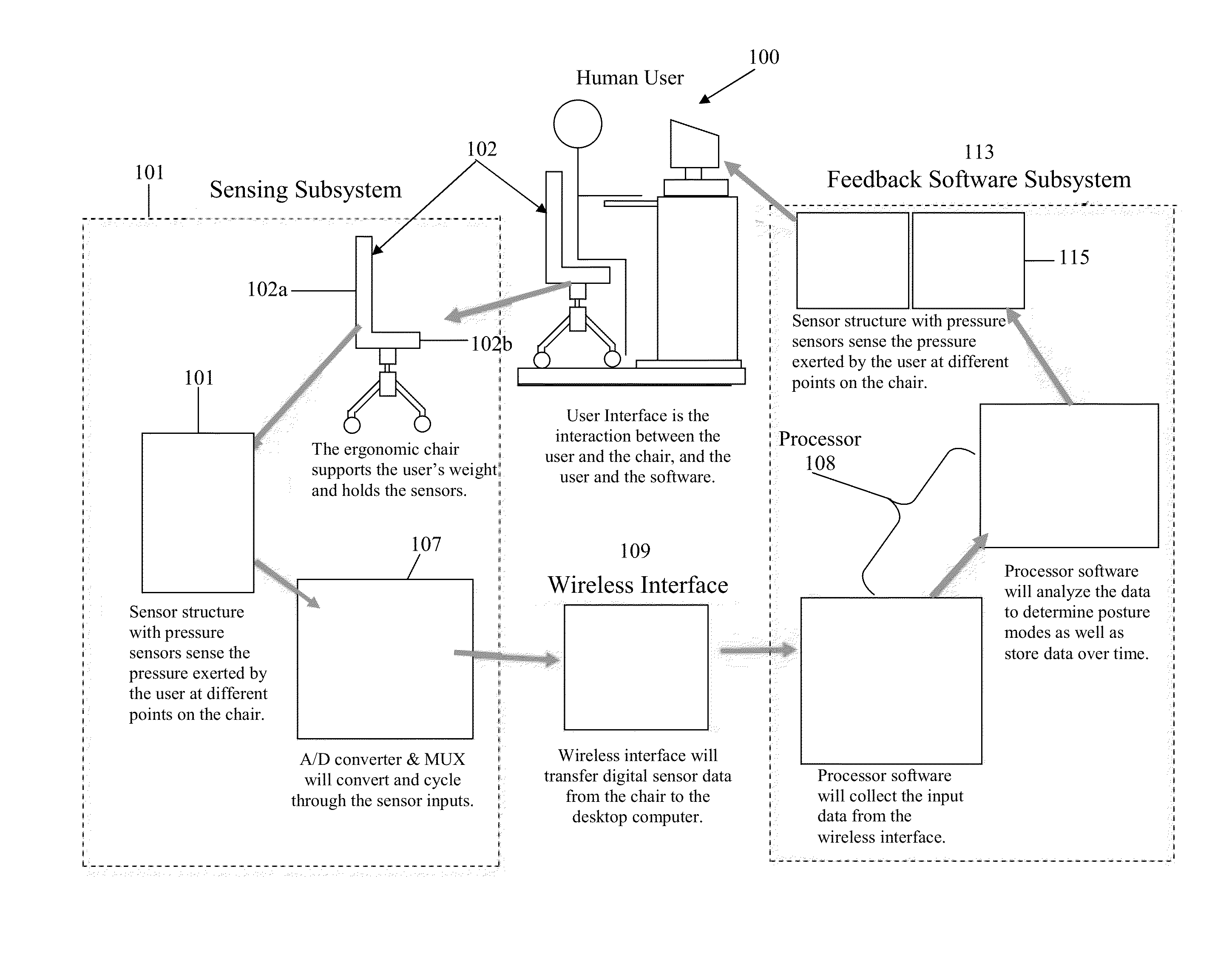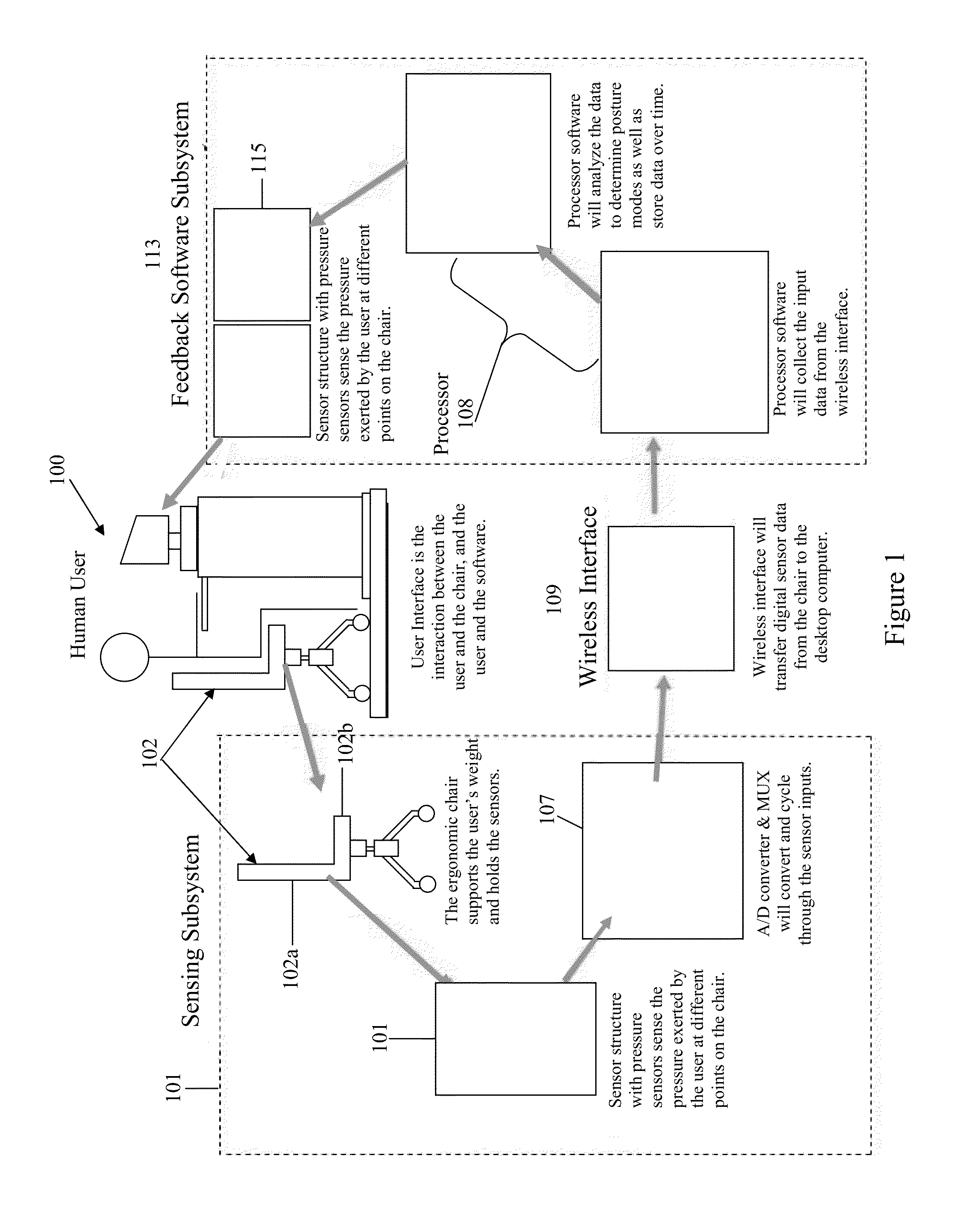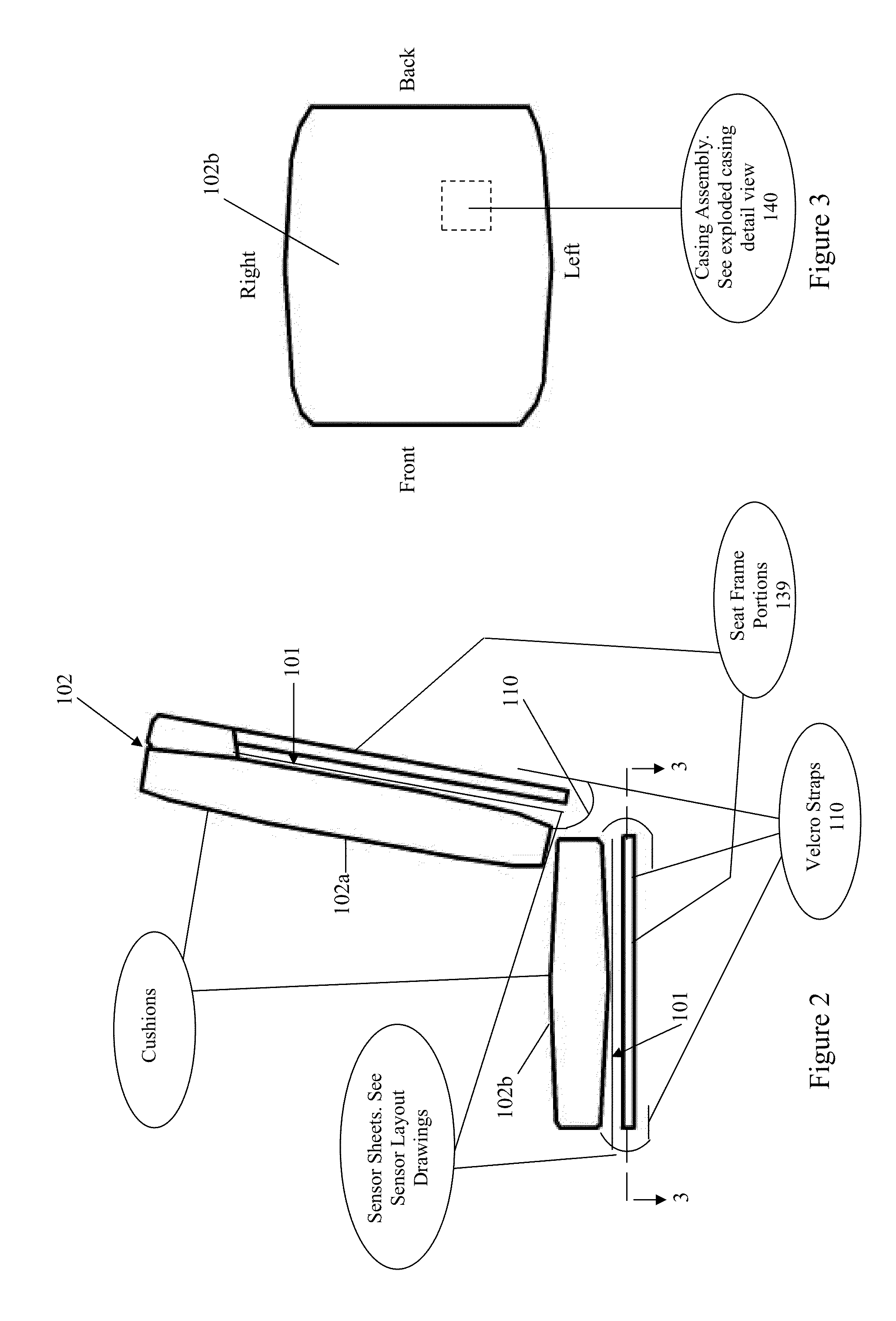Providing information related to the posture mode of a user appplying pressure to a seat component
a technology of posture mode and seat component, applied in the field of providing information related to the posture mode of a user appplying pressure to a seat component, can solve the problems of reducing productivity, provoking unwanted back problems, poor performance, etc., and achieve the effect of minimizing the likelihood of a false signal being applied
- Summary
- Abstract
- Description
- Claims
- Application Information
AI Technical Summary
Benefits of technology
Problems solved by technology
Method used
Image
Examples
Embodiment Construction
[0031]As described above, the present invention provides a system for producing information about the posture of a user applying pressure to a seat component. The principles of the present invention are described below in connection with a chair that has seat components such as a seat cushion and a back cushion for supporting a user. From that description, the manner in which the principles of the present invention can be used with various forms of seat components will be apparent to those in the art.
DEFINITIONS
[0032]In this application, sensors being in “circuit communication” with a processor means any means by which the sensors transmit data to the processor, including wire communications, wireless communications, etc. Also, a “seat component” can be a seat, a back or an arm rest portion of a chair, which may have e.g. a “cushion” that is a structure that includes at least a contained compliant mass (e.g. foam) that yields when pressure is applied against it. In addition, a “cush...
PUM
 Login to View More
Login to View More Abstract
Description
Claims
Application Information
 Login to View More
Login to View More - R&D
- Intellectual Property
- Life Sciences
- Materials
- Tech Scout
- Unparalleled Data Quality
- Higher Quality Content
- 60% Fewer Hallucinations
Browse by: Latest US Patents, China's latest patents, Technical Efficacy Thesaurus, Application Domain, Technology Topic, Popular Technical Reports.
© 2025 PatSnap. All rights reserved.Legal|Privacy policy|Modern Slavery Act Transparency Statement|Sitemap|About US| Contact US: help@patsnap.com



